A healthy home is a happy home. Maintaining food safety guidelines in your kitchen when handling, cooking, and storing food can help prevent foodborne bacteria and illness from spreading. It is essential to understand the importance of food safety and how you can practice these tips at home.
Let’s jump right in and learn something new about safeguarding ourselves and our loved ones.
This post is part of our Basic Cooking Skills series. Each week we will be doing a deep-dive into one basic cooking skill and a brand new recipe to accompany it to practice that newfound skill. Check back throughout the series for updates and new posts.
Please note this post contains affiliate links, which means I receive a small commission, at no extra cost to you, if you make a purchase using the links. Please see my disclosure for more details.
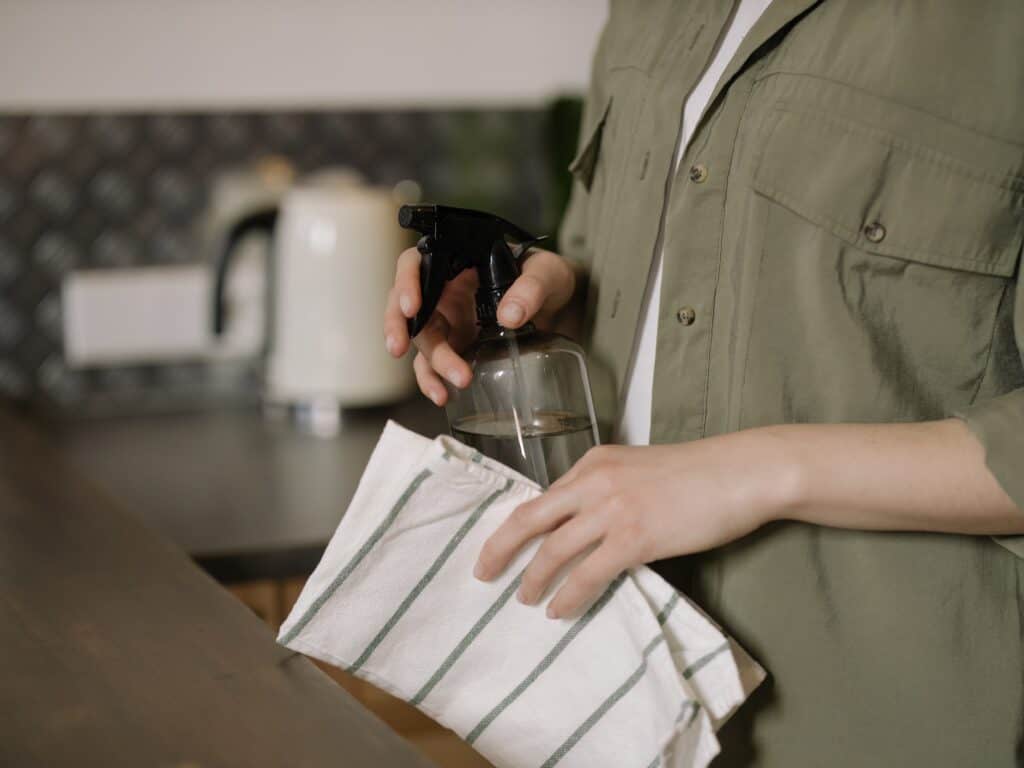
What is food safety?
All too often I find that I assume I’m making smart choices in the kitchen, when in reality we all could be doing better. I’m not referring to healthy dietary choices, but precautions to retain the quality of your food and limit the risk of bacteria.
Food safety is essentially the discipline of keeping your food secure throughout the entire cooking process. These decisions begin the moment you enter the grocery store and end with disposing of scraps from a meal.
First and foremost, I am not an expert on this matter and would recommend that if you’re ever unsure about what is/isn’t safe, please refer directly to information form regulatory organizations. The World Health Organization has tremendous resources that I would encourage you to read thoroughly and supplement this post with.
the importance of food safety
When you pick up groceries from the store, you are making food safety decisions on your route throughout the store whether you realize it or not.
Do you pick up refrigerated food first and let them warm and potentially spoil, while gathering the rest of your items? Or do you save frozen and refrigerated goods for last?
Leaving the store, do you run a few more errands with your groceries in tow? Or do you head home directly to preserve the refrigerated food?
Every single decision you make regarding your food can have an impact on its quality and upkeep. It starts long before you begin a recipe and carries through to the meal’s storage.
Foodborne illness are preventable. Guidelines for food safety are in place to assure you that you’re making smart choices for yourself and your family.
recommended food safety guidelines
There are four major guidelines for food safety : clean, separate, cook, chill.
1) Clean your hands, surfaces, and tools frequently
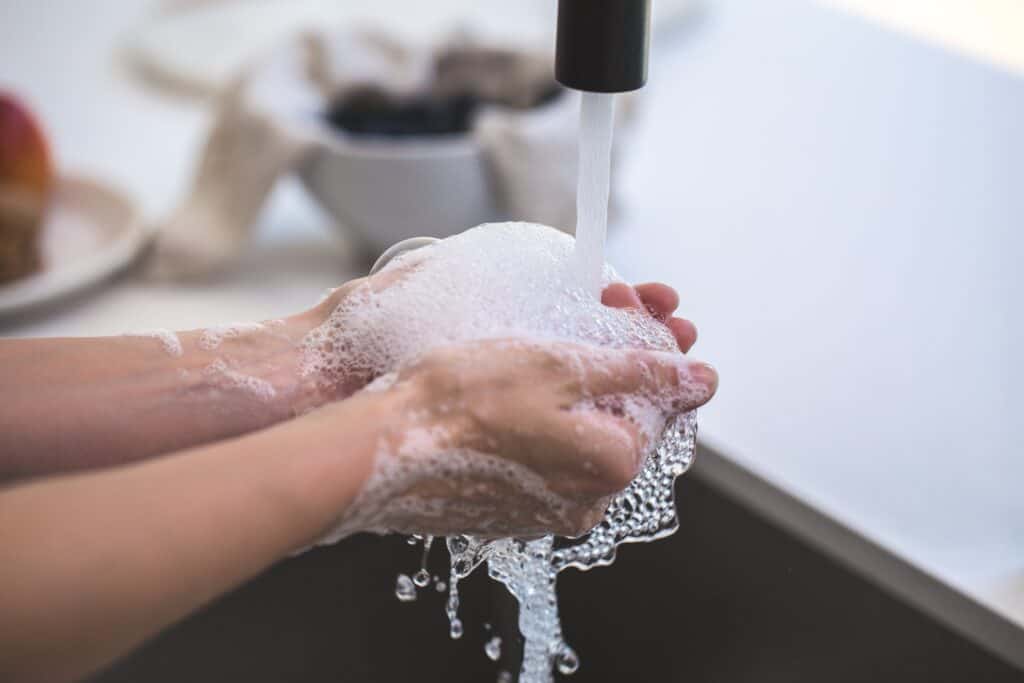
Preventing cross-contamination is key to reducing the spread of bacteria and viruses. Minimizing the spread = minimizing the risk.
Your hands are the main culprit as they touch so many items throughout your kitchen! Utensils, cutting boards, produce, the sink, your apron, the food packaging, you come into contact with all of these items with your hands.
Hands should be washed before cooking to not introduce any outside germs to your food, during cooking as you handle raw meat/seafood/eggs, and after cooking to rid your hands of any remaining food particles.
Clean cooking surfaces regularly with warm, soapy water. Your counter or stovetop may not appear dirty, but that doesn’t mean there aren’t lingering food particles or bacteria.
Wash utensils and cooking tools in direct contact with food after every use. It’s a good habit to wipe down any and all surfaces used at the end of each day. Think of the knobs of a stove, the inside of a microwave, and the sink faucet. They may seem unsuspecting but dirt and grime will definitely build up over time (I can speak from experience here).
2) Keep raw meat separate from other food.
As you’re walking through the grocery store and filling up your cart, try to keep in mind this guideline of separation. Raw meat and seafood should be in plastic bags and kept separate from the other food in the cart.
In your kitchen, always maintain distance between raw meat and other produce in every way possible.
Keep a separate cutting board to use only for raw meat. I have a plastic cutting board reserved solely for cutting chicken, shrimp, etc. and a wooden cutting board for everything else.
When preparing lots of ingredients for a dish, cut raw meat last after you’ve chopped everything else. Always wash a knife in hot soapy water after cutting raw meat.
Maintaining this separation between raw meat and other foods is HUGE for preventing cross-contamination.
3) Cook food to the proper temperature.
You cannot rely on how food looks to gauge doneness. An accurate way to check for doneness is by checking the internal temperature.
The proper internal temperature for food depends on the specific meat used, it’s different for all of them.
It’s worth purchasing an inexpensive food thermometer to increase your confidence in your cooking. This is my favorite meat thermometer that I use regularly:

To check the internal temperature of a chicken breast, for example, place the meat thermometer in the thickest part of the breast. The thickest part will cook the slowest and will be the last to finish cooking, so always check here.
(Be sure to not poke the thermometer all the way through to the pan or baking dish, because that will skew the results.)
Because the meat may not always be done when you check the temperature, to lower the risk of cross contamination clean the food thermometer with hot, soapy water before AND after each use.
4) Chill perishable food quickly.
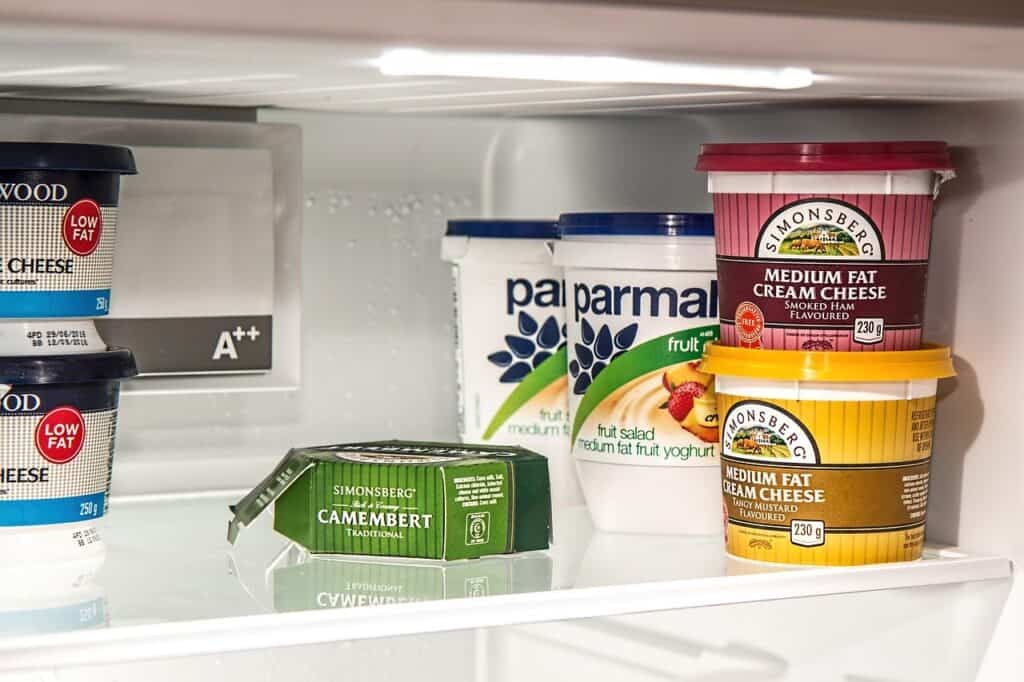
A specific range of temperature is referred to as “the danger zone” in the food world.
The danger zone is 40-140 degrees Fahrenheit. Food should not be eaten if left in this temperature range for more than 2 hours (1 hour if it’s a hot day).
- Cold food should be stored at 40 degrees or less
- Hot foods should be kept at 140 degrees or more
As the temperature of the food encroaches on this zone, bacteria multiply and become more prevalent.
To safely thaw food, do so in the refrigerator, in cold water, or in the microwave. Food should not be thawed on the counter because room temperature sits right in the middle of the danger zone!
Food Expiration Dates
Expiration dates on food can. be very confusing and can range from “sell-by” to “use by.” Let’s break down the differences below and see which dates you should really pay attention to.
- Best If Used By/Before = the date for the highest quality, not related to the safety of the food. Week old crackers may be stale and unpleasant to eat, but that doesn’t mean they’re not safe to consume.
- Sell By = the date from manufacturers communicating to retailers when to remove the product from their stores. The quality of food will extend past this date because it takes into account remaining in the store for a few days, sitting in someone’s home before being eaten, etc.
- Use By = the last date that guarantees the best quality of a product, also not related to the safety of the food.
A great resource provided by FoodSafety.gov is called the FoodKeeper. This app was developed by the USDA and allows you to search food items and get accurate information about how long each one maintains its quality. It goes even further to provide you with cooking tips, how cool!
Uses for Expired Food?
Not all hope is lost if you discover you’ve let some items in your fridge start to spoil! There are really creative ways to put your “old” food to practical use and reduce waste. If they’re rotten, it’s best to throw them out or compost them. BUT if they are in that in-between phase, food can still be used!
- Avocados can be turned into hair masks
- Coffee grounds and greek yogurt can be used as face masks
- Citrus peels can be used to make home cleaners
- Recently soured milk can be used as buttermilk
- Create croutons with stale bread
- Veggie scraps can be cooked into a broth
- Egg shells provide nutrients in your garden beds
And more!
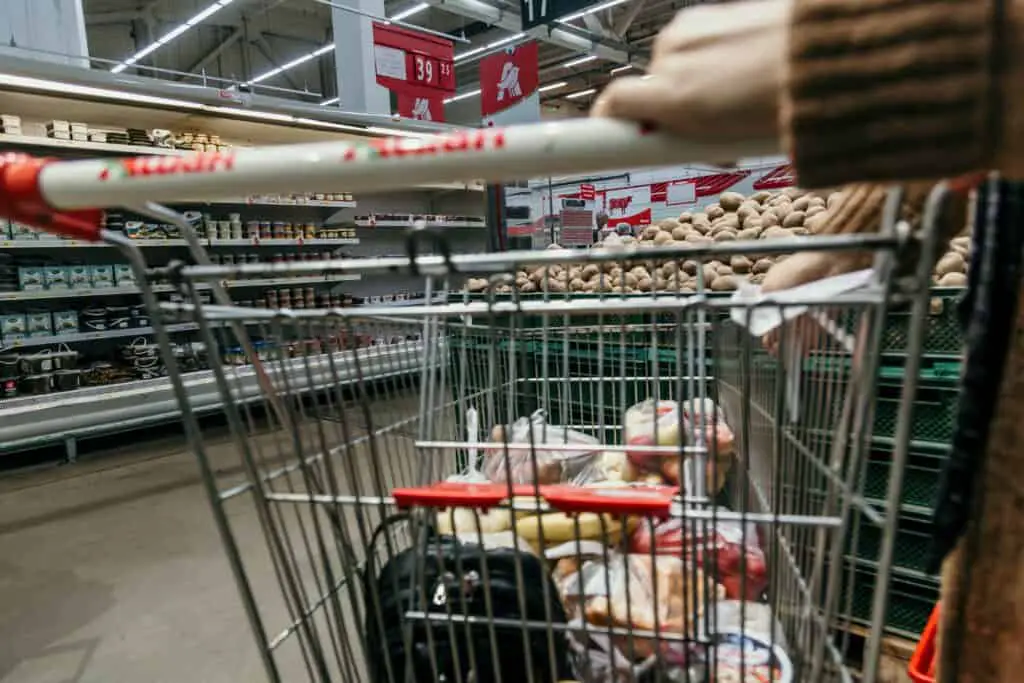
Food safety Tips
When Shopping…
- Keep meat and seafood separate from other groceries in your cart
- Purchase perishables such as meat or refrigerated goods right before check-out
- Never purchase meat or poultry with torn/leaky packaging
- Do not buy food after the sell-by or use-by date
- Have a cooler bag in your car for refrigerated items on a hot day
- Put away groceries quickly to prevent spoiling
When Cooking…
- Wash produce before using with a food wash
- Cook or freeze: poultry/fish/ground meat after 2 days; beef/pork after 3-5
- To freeze meat, wrap the original packaging in a layer of foil or plastic wrap for extra coverage
- Only defrost meat in the fridge, in cold water, or in the microwave
- Use a meat thermometer to check for doneness
- Refrigerators should be set to at least 40 degrees, and freezers set at 0
- Label leftovers in your fridge with the date prepared
- Clean the lids on canned goods before opening
- Canned goods should remain safe indefinitely if not exposed to extreme temperatures
- Do not reuse marinades from raw food
- Marinate food in the fridge in a covered dish
- Generally, leftovers should be cooked within 4 days
Pin me!
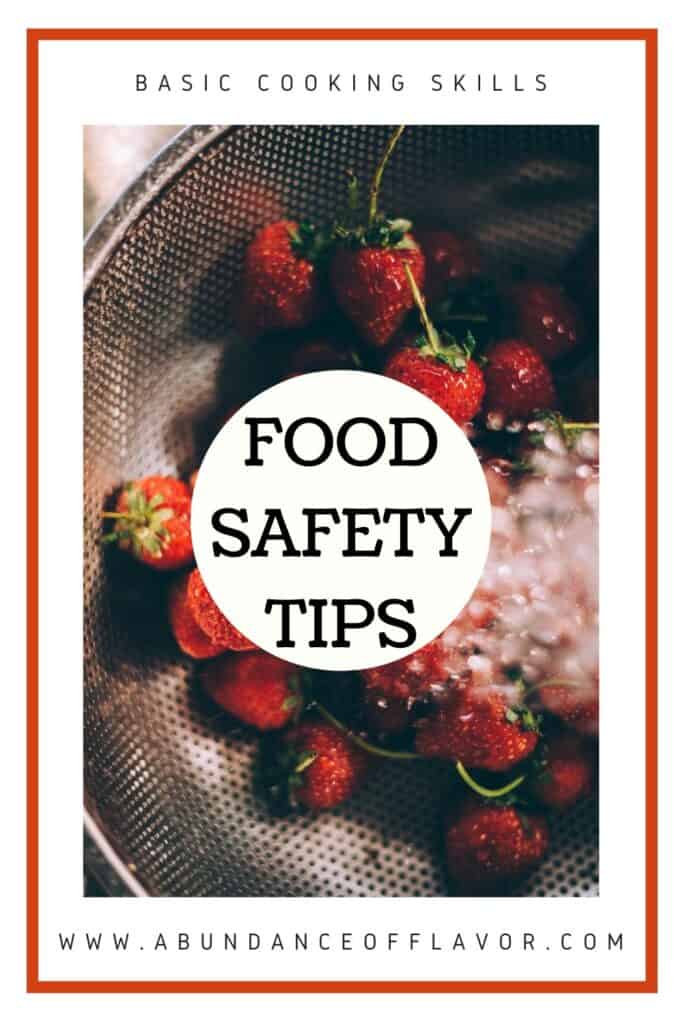
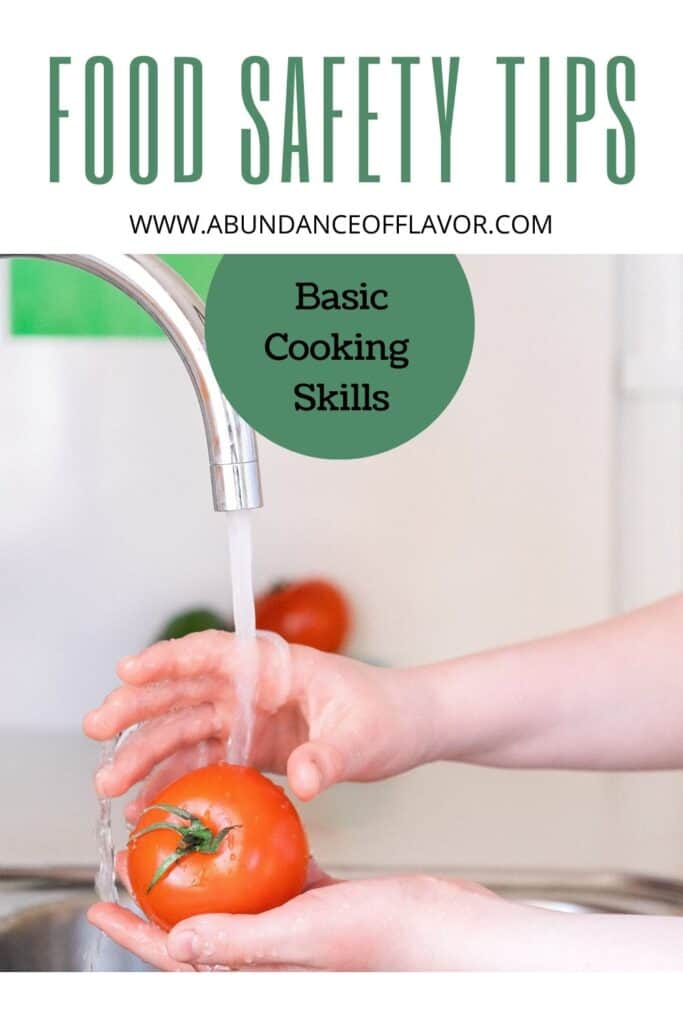

implement your new skill
I want to encourage you to take note of the tips you learned and hopefully retain that information for the next time you’re cooking or handling food. Even if you carry out ONE new tip when you’re grocery shopping you are taking a major stride towards your health and achieving the utmost food safety in the kitchen.
***UPDATE Alert! Find the accompanying recipe here to test out your knowledge of food safety.
Do you have any other food safety tips to use at home? Share in the comments below!



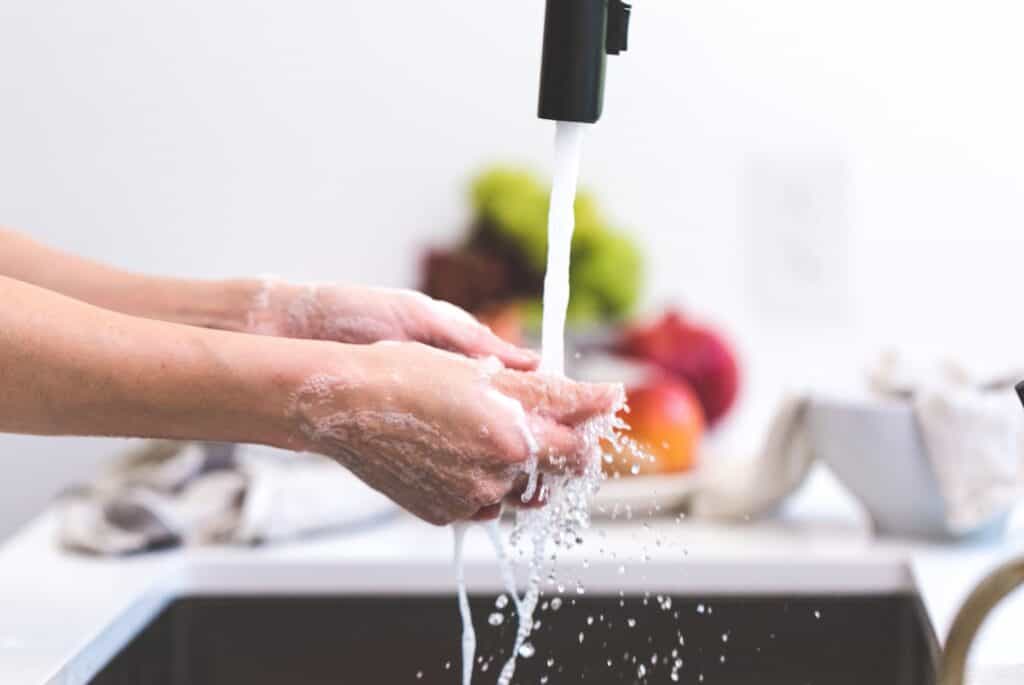

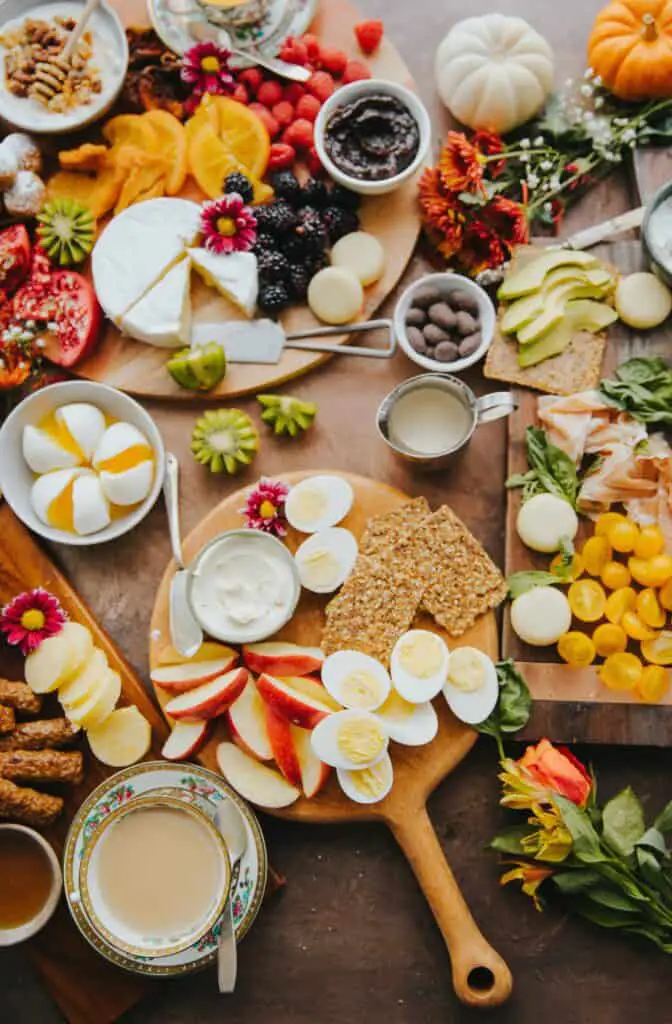

Great post and very important not only with the current situation but in the long term as well. Not many people fully know how to properly keep their kitchens safe and you explain it very simply!
Thank you so much! It was fun researching proper guidelines and I personally wanted a resource to use long term as well
These are very important tips. Thanks for sharing.
Thank you so much for your comment!
Thank you for this! It is very helpful!
Great, I’m so glad it’s helpful for you!
Amazing tips!! Always looking for the safest ways to store and prepare foods. Thanks for sharing!
Thanks so much! I hope the tips will be helpful moving forward!
This post is very important and the tips are so helpful. I am on Furlough at the moment after the restaurant I work at temporarily closes and we’ve had to do a lot of online food training. This is really helpful!
EM x
Loveemblog.com
I’m sorry to here about the current state of your job, but am glad this could be helpful!
This was really helpful and interesting – I hadn’t even thought about how the order in which you shop can have an impact! I also think it is important to highlight the difference between ‘use by’ ‘sell by’ etc.
– charlotte / https://charlottesspace.com
Thanks so much! I had no idea there was a difference in the meaning of the dates on your food until I did a little research!
I want to a free food safety course a few years back that was done by my local community, it was really insightful, as is this post. One thing they didn’t tell us about what how you can use avocados as hair mask. What exactly is a hair mask?
Thank you so much! A hair mask is a cream that is put on the hair for a short amount of time that is meant to rejuvenate hair in some way, either help hydrate, strengthen, defrizz, etc. Apparently avocados are amazing moisturizers! Who knew 😂
Love this post! It is good to keep surfaces clean and handle food responsibly. I will add my two cents, in case any one needs it: When shopping, also check item expiration dates. Stores tend to push the almost expired items with no shame . . .
YES very helpful too!! Thanks for contributing!
These are all such great food safety tips! Thanks so much for sharing them!
Thanks so much for your comment! I hope they are helpful 🙂
This is such a great important post! Thank you for sharing. I’m finding that a lot of my peers (including myself) were never taught this stuff, we’ve learned by posts like yours, so thank you!
Thanks so much for your kind words! I completely agree, I learned about most of this stuff initially through research of my own or a few random cooking classes. I even learned so much doing more research for this post!
Great tips! We honestly could do better with a lot of these in our house! 🙈
ME too. I learned a lot researching this topic and found so many little ways I could do better. Thanks for your comment!
I learned some of these tips back in high school in my cooking class.
That’s awesome, it sounds like it was a good class! I never really knew most of these things until researching myself 🙂
Great post! Food safety is something I am picky about, but I definitely learned new helpful things from your post. I particularly liked the list of things you can do with expired food. It’s wonderful if you can reduce, reuse, and recycle! Thanks for all the tips and info.
Thanks so much! I too really enjoyed learning about how to reduce waste and use expired food! I tried the avocado hair mask and it was super messy but effective 😂
I love this post and all your posts. You are like my own little kitchen aide. I am not much of a cook and can use all the help I can get, so thanks.
Shani Dee
Aww thank you so much for your sweet comment 🙂 My goal is to provide helpful resources so it makes me so happy to hear that!
Finding ways to use expired fold got me intrigued the most on this post. Never knew you could use citrus peels for cleaning and greek yogurt for face masks, which I’m very interested in knowing how you found that?
Johnny | Johnny’s Traventures
https://johnnystraventures.com
One of my favorite parts of this post was researching different ways to reduce food waste! I’ve used citrus in natural home cleaners and some high end face masks use greek yogurt. It’s great to DIY these at home without using any harsh chemicals
That’s very important! I had to go through Food Hygiene course becauss of what I do and it was eye opening! Great post x
Thank you! I think I’d really appreciate more classes regarding this topic!
These are all great tips! I don’t think a lot of people realise how important food safety is and how ill you can become if you don’t follow it!
Thanks so much! I agree, it’s important to be aware of these things to avoid unnecessary stomachachesand keep those with especially fragile immune systems safe
So glad you posted this! This is exactly the kind of guide I need for my adventures in cooking.
Thanks so much! I hope it is a helpful resource for you 🙂
Pingback: Easy New Orleans Gumbo - with chicken, shrimp, and sausage - Abundance of Flavor
Great tips! Perfect for everyone staying at home 😊
Thank you so much! With all this time I’m my hands I’m working on being more conscious of these things 🙂
Pingback: 4 Elements of Cooking - Salt, Fat, Acid, Heat - Abundance of Flavor
Pingback: Mexican Sauteed Vegetables - Abundance of Flavor
Pingback: Sauteing Vegetables - Basic Cooking Skills - Abundance of Flavor
Pingback: Roasting Vegetables - Basic Cooking Skills - Abundance of Flavor
Pingback: Sauteing Meat, Poultry, & Seafood - Basic Cooking Skills - Abundance of Flavor
Pingback: Making a Roux - Basic Cooking Skills - Abundance of Flavor
Pingback: Greek Lemon Chicken Soup - Abundance of Flavor
Pingback: Thai Turkey Meatballs in a Sweet Chili Sauce - Abundance of Flavor
Pingback: Boiling Potatoes - Basic Cooking Skills - Abundance of Flavor
Pingback: Creamy Garlic Parmesan Mashed Potatoes - Abundance of Flavor
Pingback: Classic Chicken Parmesan - Abundance of Flavor
Pingback: The Absolute Best Chicken Marsala - Abundance of Flavor
Pingback: 21 Basic Cooking Skills for Beginners - Abundance of Flavor
Pingback: Ham & Eggs Scramble - Abundance of Flavor